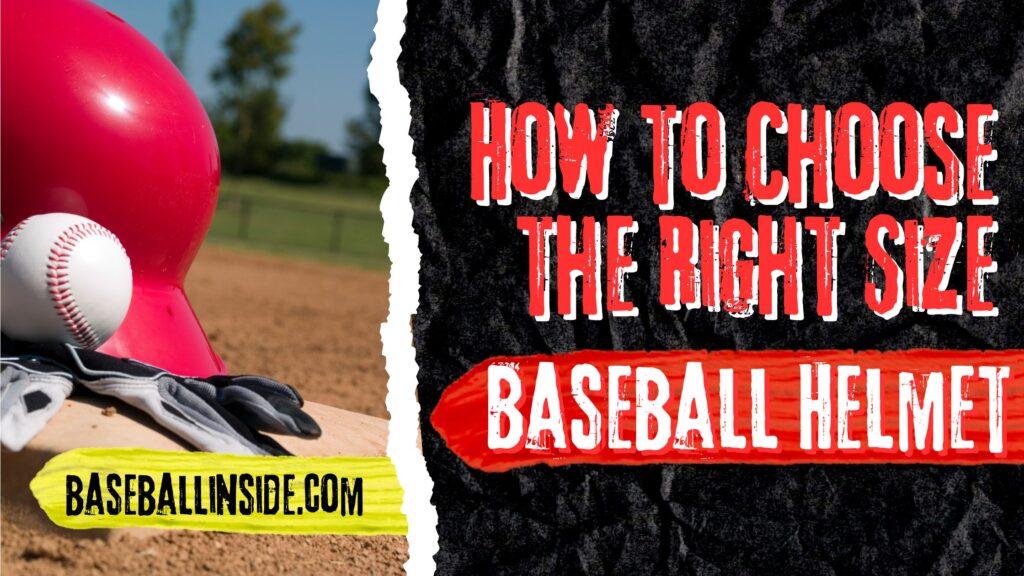To choose the right size baseball helmet, measure the circumference of your head and refer to the manufacturer’s sizing chart. Ensure a snug fit without discomfort.
A well-fitting baseball helmet is crucial for safety and performance on the field. Helmets protect players from head injuries caused by fast pitches or accidental collisions. Choosing the right size ensures optimal protection and comfort, allowing players to focus on their game.
Helmets come in various sizes, so knowing how to measure your head accurately is essential. A poorly fitting helmet can slip or cause discomfort, affecting performance and safety. This guide will help you find the perfect fit, ensuring you stay safe and comfortable while playing baseball.
Importance Of Helmet Size
Choosing the right size baseball helmet is crucial for any player. The correct size ensures safety and enhances performance. A helmet that fits well can make all the difference on the field.
Safety Concerns
Safety is the most important reason to choose the right helmet size. A helmet that is too large can slip and fail to protect the head. This can lead to serious injuries.
A helmet that is too small can cause discomfort and headaches. It can also reduce the player’s focus during the game. Properly fitting helmets offer maximum protection from impacts and falls.
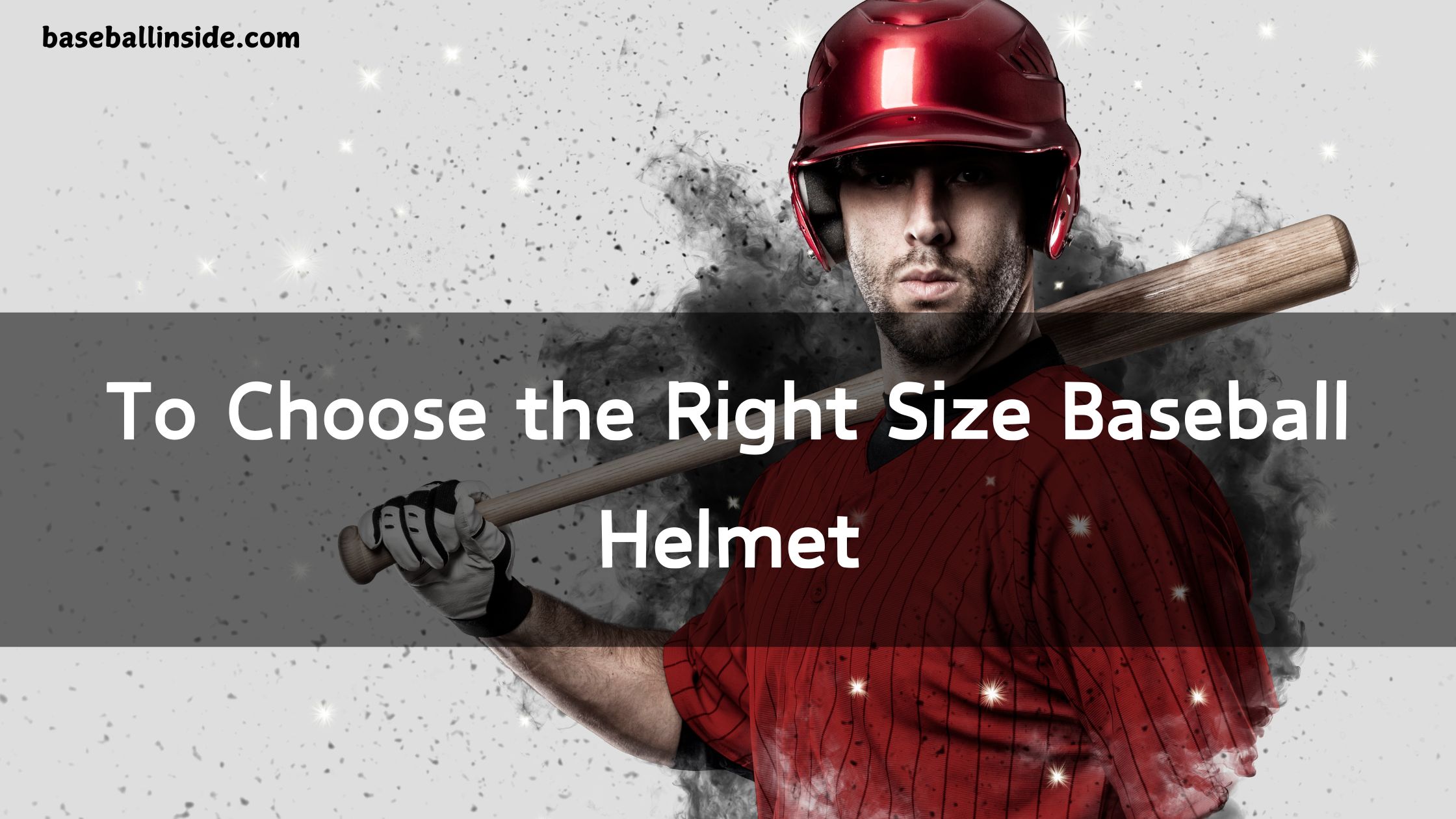
Performance Impact
A well-fitted helmet improves performance on the field. It stays in place and allows players to move freely. This enhances their confidence and focus during the game.
Comfortable helmets reduce distractions and keep players’ minds on the game. They also help players maintain their energy and stamina throughout the match.
| Helmet Size | Head Circumference |
|---|---|
| Small | 20-21 inches |
| Medium | 21-22 inches |
| Large | 22-23 inches |
| X-Large | 23-24 inches |
To find the right size, measure the head circumference. Use a soft tape measure and wrap it around the head above the ears. Compare the measurement to the size chart.
Remember, a good fit is snug but not tight. The helmet should sit level on the head and not rock back and forth. Check for adjustments and padding to ensure a secure fit.
Measuring Head Size
Choosing the right size baseball helmet is crucial for safety and comfort. The first step is measuring head size accurately. This ensures the helmet fits perfectly, offering maximum protection.
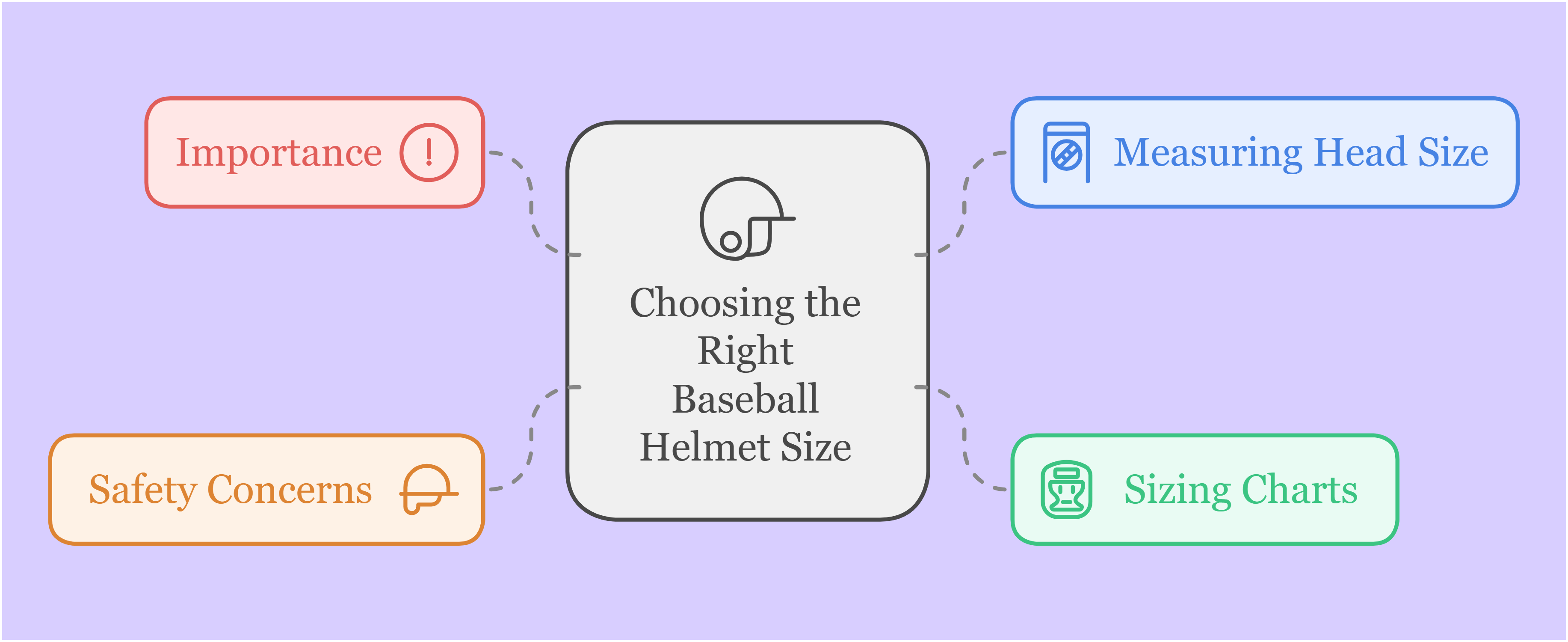
Tools Needed
- Soft measuring tape
- Mirror or helper
- Notepad and pen
Measurement Steps
- Stand in front of a mirror or ask a helper to assist.
- Wrap the soft measuring tape around your head.
- Position the tape just above the eyebrows and ears.
- Ensure the tape is level and snug but not tight.
- Take note of the measurement in centimeters or inches.
Refer to the table below for helmet size guidelines based on your measurement:
| Head Circumference (Inches) | Helmet Size |
|---|---|
| 21.5 – 22 | Small |
| 22.5 – 23 | Medium |
| 23.5 – 24 | Large |
Repeat the measurement process to ensure accuracy. Double-checking helps avoid mistakes and ensures the best fit.
Now you know how to measure head size for a baseball helmet. Use this method to find your perfect helmet size.
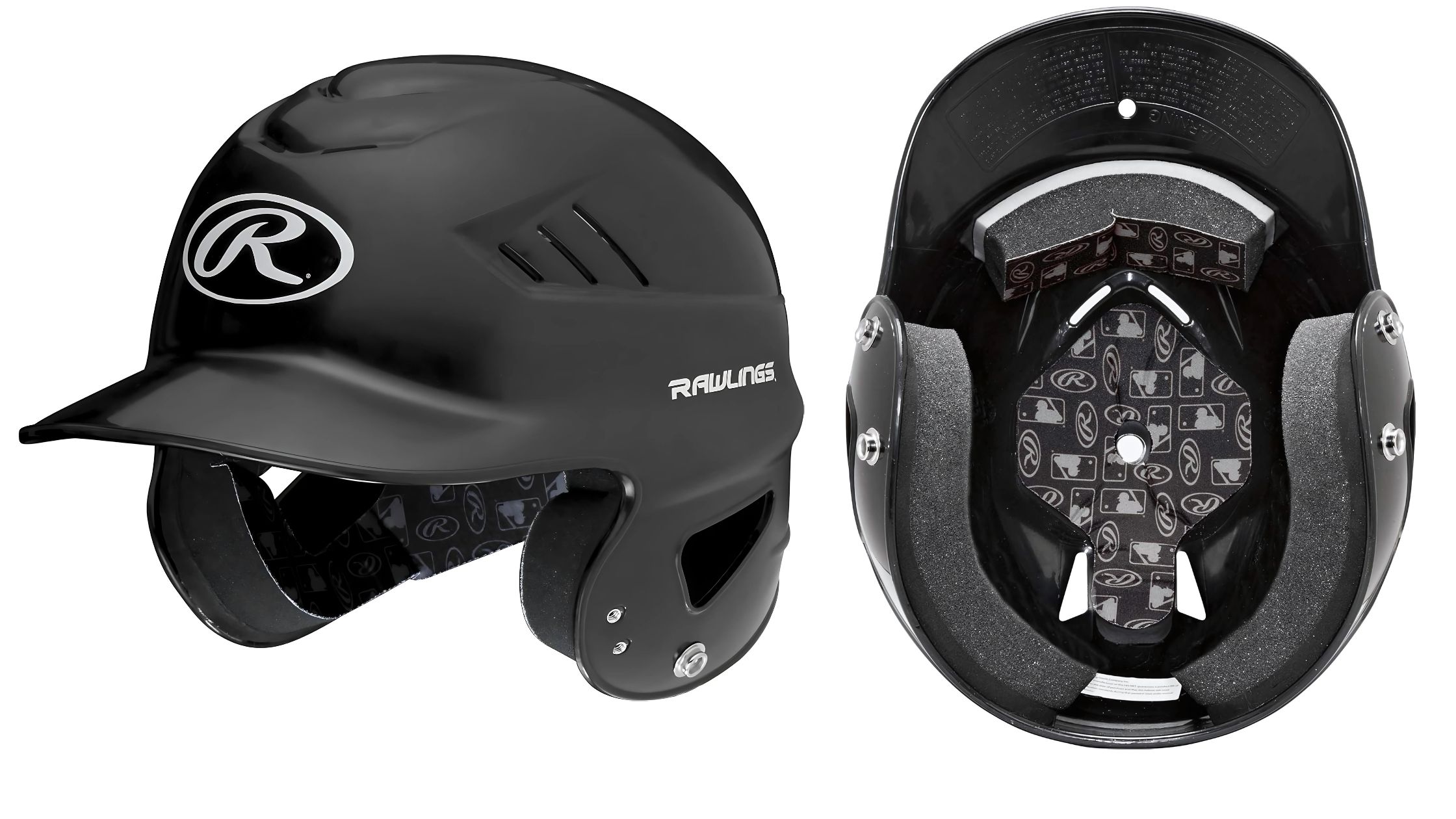
Helmet Sizing Chartshttps:
Choosing the right size baseball helmet is crucial for safety and comfort. Helmet sizing charts simplify this process. These charts help you match head size to helmet size. Accurate measurements ensure a snug and secure fit.
Understanding Charts
Helmet sizing charts usually include head circumference measurements. Measure your head using a flexible tape measure. Wrap the tape around your head, just above your eyebrows. Note the measurement in inches or centimeters.
Refer to the chart provided by the helmet manufacturer. Match your head size with the corresponding helmet size. Different brands may have different sizing standards. Always use the specific chart for the brand you are considering.
Age-based Recommendations
Some charts offer age-based recommendations. These are helpful if you are unsure about measurements. Below is a general guideline for age-based helmet sizes:
| Age Group | Head Circumference (inches) | Helmet Size |
|---|---|---|
| 5-7 years | 18-19.5 | Small |
| 8-10 years | 19.5-21 | Medium |
| 11-13 years | 21-22.5 | Large |
| 14+ years | 22.5-24 | Extra Large |
These age-based sizes provide a general starting point. Always measure for the most accurate fit. Choose a helmet that offers adjustable features. Adjustable helmets can accommodate growth and changes in head size.
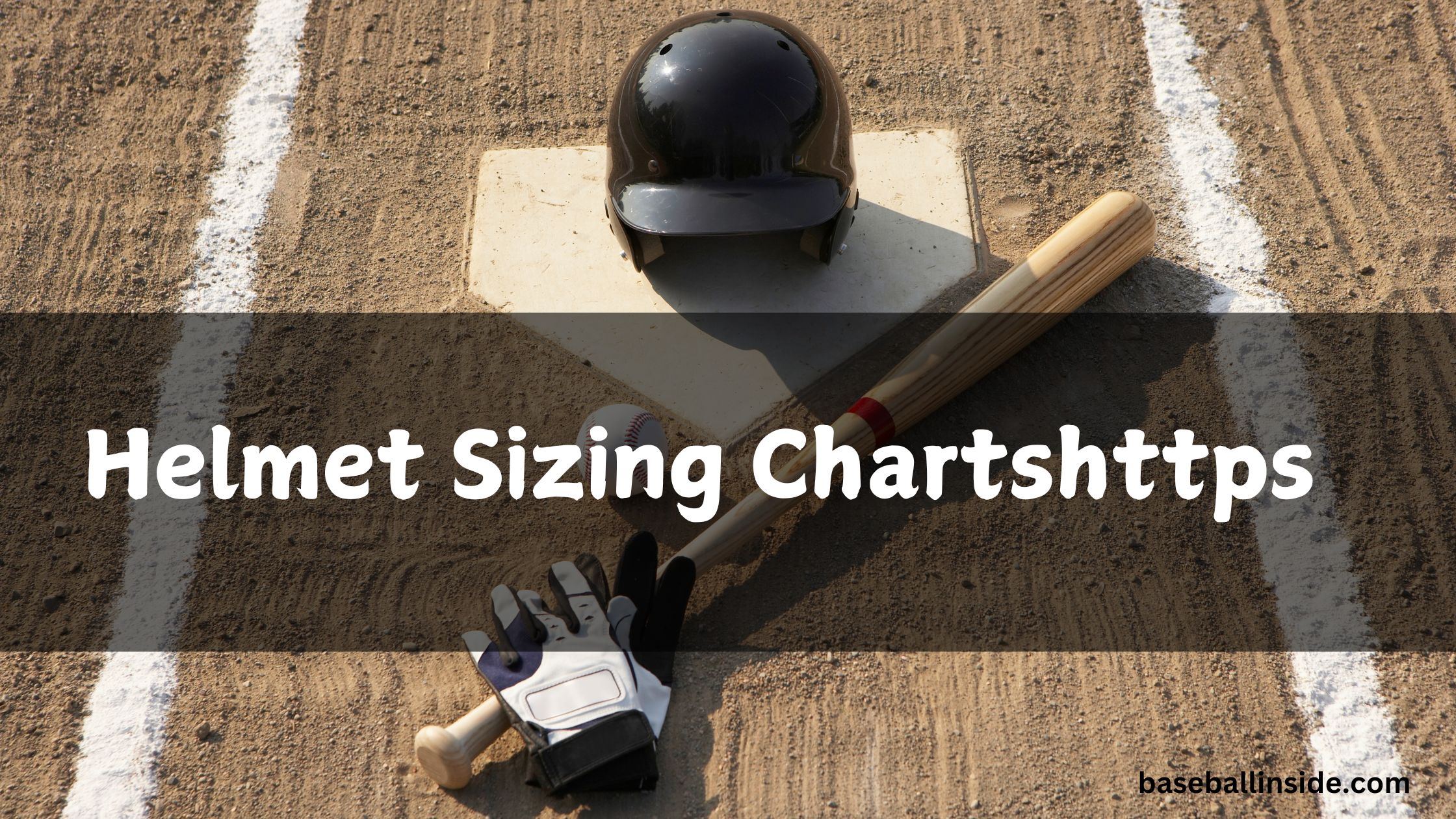
Types Of Baseball Helmets
Choosing the right baseball helmet can be challenging. Understanding the different types of baseball helmets is crucial. This ensures your safety on the field.
Youth Vs. Adult
Baseball helmets come in two main categories: youth and adult. Youth helmets are designed for kids and teenagers. These helmets are smaller and lighter. Adult helmets are for grown-ups, providing more protection.
| Type | Age Group | Features |
|---|---|---|
| Youth Helmets | Kids & Teenagers | Lighter, Smaller Size |
| Adult Helmets | Adults | More Protection, Larger Size |
Adjustable Helmets
Adjustable helmets are a great choice for players. These helmets come with adjustable straps. This allows you to get a perfect fit every time.
- Easy to Adjust: These helmets have simple adjustment mechanisms.
- Comfortable Fit: Adjust the helmet to your head size easily.
- Cost-Effective: One helmet can fit different players.
Adjustable helmets are suitable for both youth and adult players. They offer flexibility and comfort. This makes them a popular choice among players.
Fit And Comfort
Choosing the right size baseball helmet ensures both safety and comfort. A proper fit can prevent injuries and enhance performance. This section discusses the fit and comfort of a baseball helmet.
Padding And Lining
The padding and lining inside the helmet are crucial for comfort. They provide cushioning to protect the head from impact. Helmets with thicker padding offer better shock absorption. Soft and breathable lining helps keep the head cool and dry. Look for helmets with removable and washable lining for easy maintenance.
Straps And Adjustments
Helmet straps play a vital role in ensuring a secure fit. Adjustable straps allow for a customized fit for different head sizes. Look for helmets with chin straps that are easy to adjust. Ensure the straps are made of durable materials to prevent wear and tear. A well-adjusted strap keeps the helmet in place during intense gameplay.
| Feature | Benefit |
|---|---|
| Thick Padding | Better shock absorption |
| Breathable Lining | Keeps head cool and dry |
| Adjustable Straps | Customized fit |
| Durable Materials | Long-lasting use |
Ensure the helmet feels snug but not too tight. The helmet should sit level on the head. It should cover the forehead without obstructing vision.
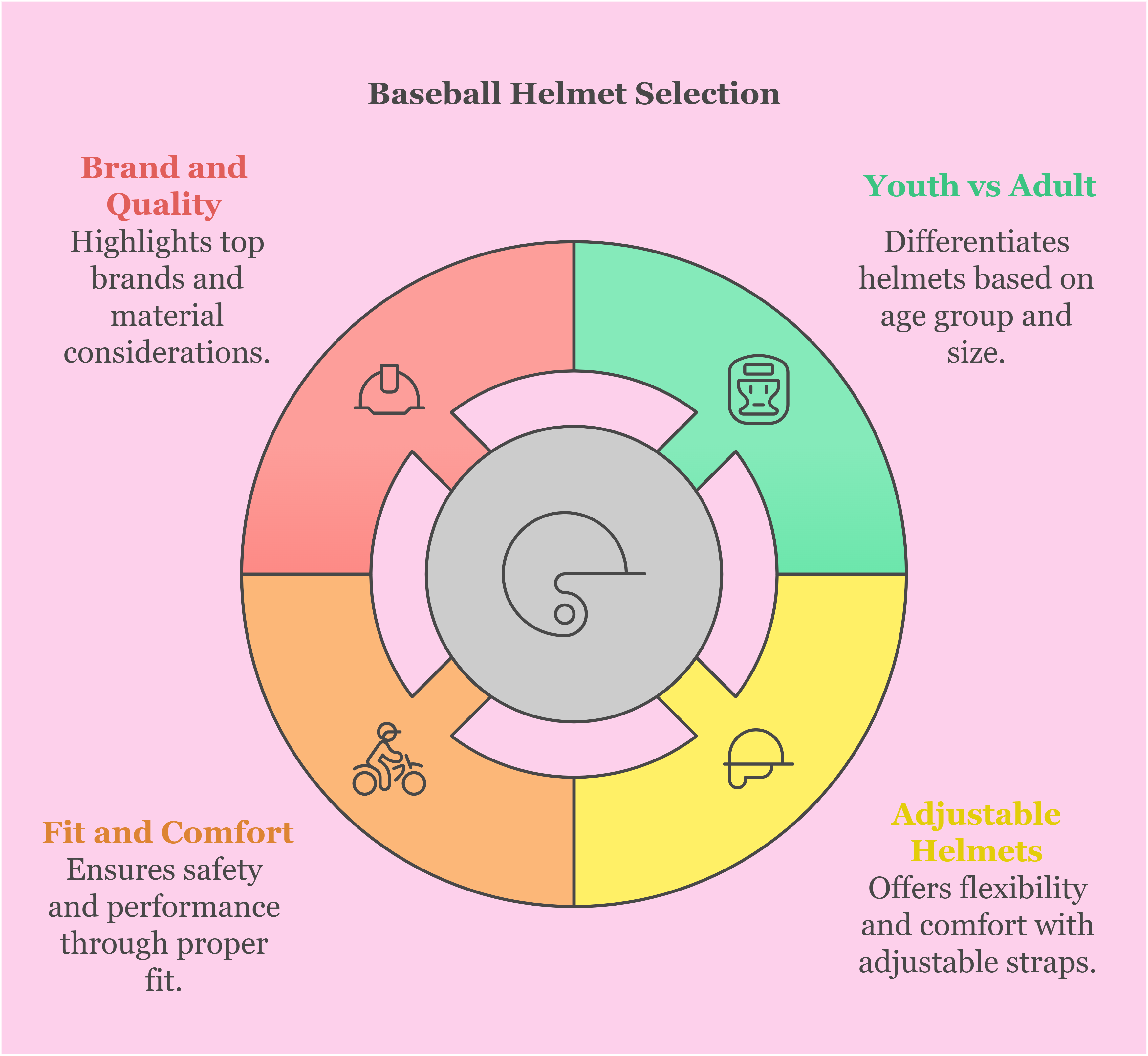
Trying On Helmets
Finding the right size baseball helmet is crucial for safety and comfort. Trying on helmets ensures the best fit for your head. Here’s how to do it properly.
Proper Fit Test
A properly fitting helmet should feel snug but not tight. Follow these steps for the proper fit test:
- Put the helmet on your head.
- Adjust the chin strap.
- Shake your head from side to side.
- Make sure the helmet stays in place.
The helmet should not move when you shake your head. If it does, try a smaller size. Ensure the helmet covers your forehead without blocking your vision.
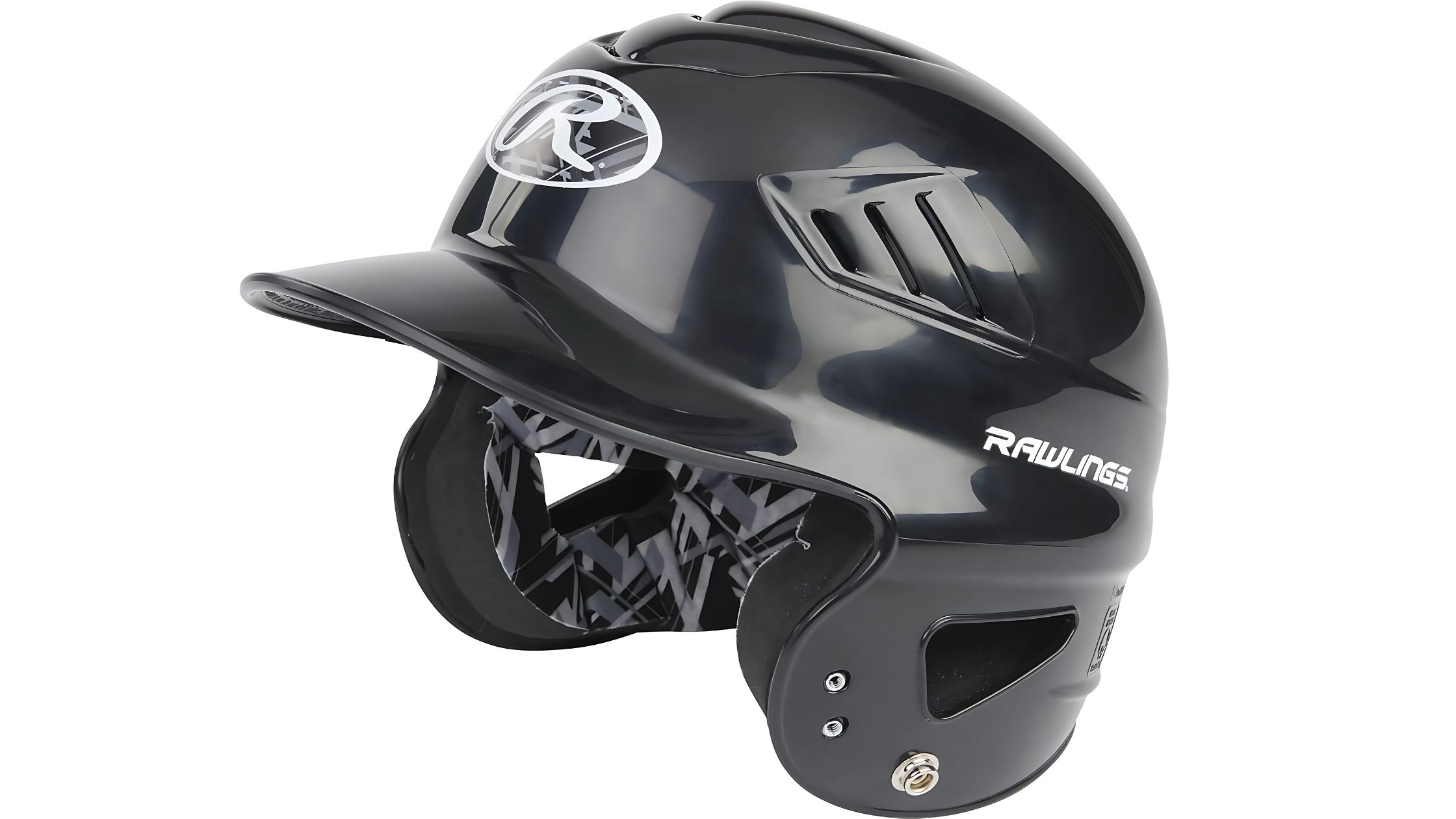
Common Fit Issues
Sometimes, the helmet might not fit perfectly. Here are some common fit issues:
- Too Tight: Causes discomfort and headaches.
- Too Loose: Moves around and offers less protection.
- Pinching: Uneven pressure points causing pain.
If you experience any of these issues, try adjusting the helmet or choosing a different size. A good fit is essential for maximum protection on the field.
Proper Fit Test
Trying on helmets ensures the best fit for your head. Follow these steps for the proper fit test:
- Put the helmet on your head.
- Adjust the chin strap.
- Shake your head from side to side.
- Make sure the helmet stays in place.
The helmet should not move when you shake your head. If it does, try a smaller size. Ensure the helmet covers your forehead without blocking your vision.
Brand And Quality
Choosing the right size baseball helmet is crucial for safety. Brand and quality play a significant role in helmet selection. Understanding the best brands and materials helps ensure you pick the best helmet for your needs.
Top Brands
Several brands are known for their high-quality baseball helmets. Here are some top brands:
- Rawlings: Known for durability and comfort.
- Easton: Offers innovative designs and quality.
- DeMarini: Renowned for their lightweight and protective helmets.
- Under Armour: Combines style with superior protection.
- Mizuno: Popular for their high standards in sports gear.
Material Considerations
The material of the helmet affects its quality and protection level. Here are key materials used in baseball helmets:
| Material | Benefits |
|---|---|
| ABS Plastic | Strong, impact-resistant, and durable. |
| Foam Padding | Provides comfort and shock absorption. |
| Metallic Alloys | Offers extra protection and a sleek look. |
High-quality helmets often combine these materials. This ensures maximum safety and comfort. Always check the material specifications before purchasing.
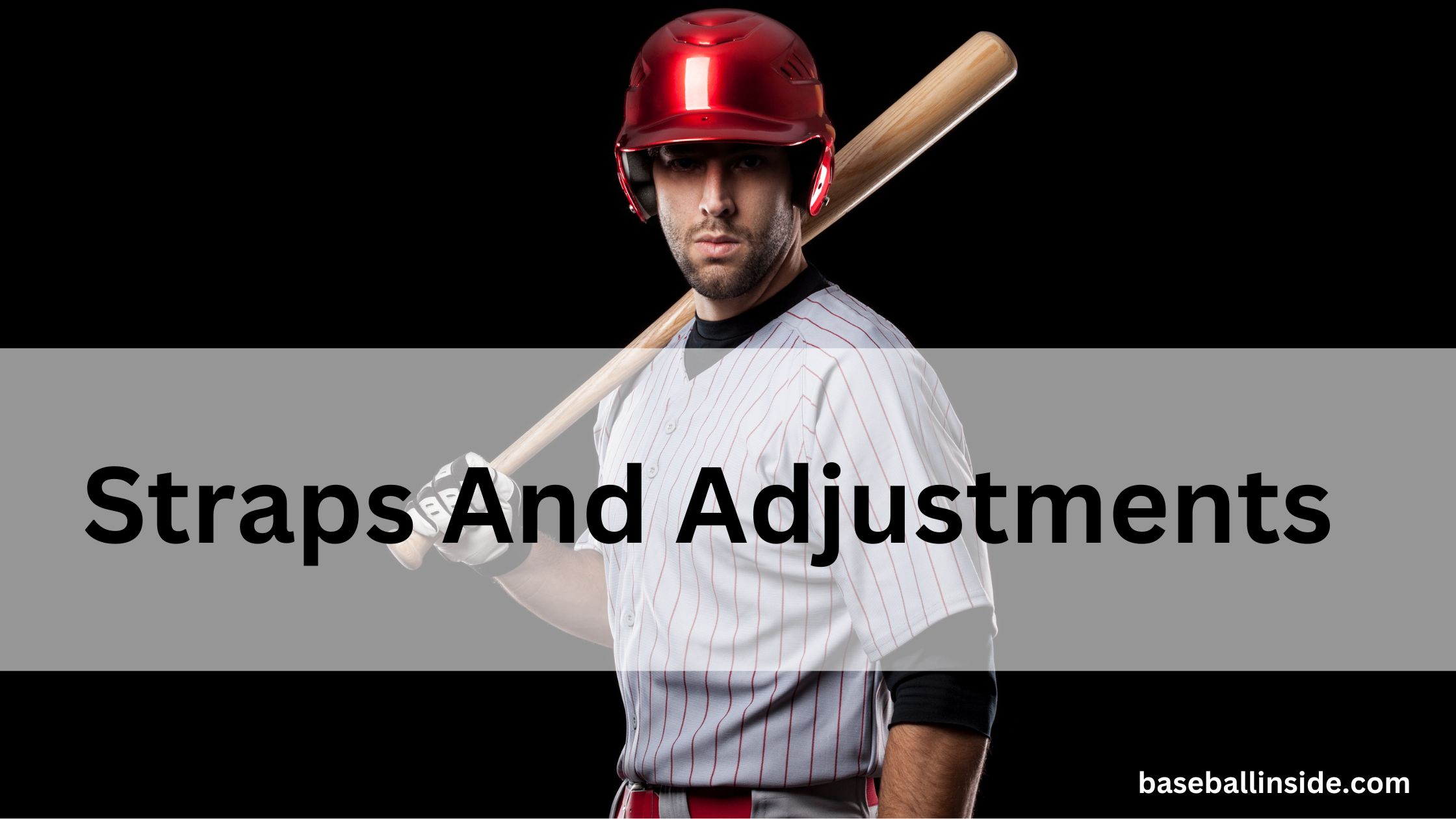
Maintaining Your Helmet
Maintaining your baseball helmet ensures its longevity and safety. Proper care will keep it looking new and ready for every game. Here are some essential tips for maintaining your helmet.
Cleaning Tips
Keeping your helmet clean is crucial for hygiene and durability. Follow these simple steps:
- Use a soft cloth and mild soap to clean the exterior.
- Avoid harsh chemicals that can damage the helmet’s surface.
- Remove the padding and wash it separately with warm water.
- Dry the helmet and padding thoroughly before reassembling.
Storage Guidelines
Proper storage of your baseball helmet is vital for maintaining its shape and integrity. Follow these guidelines:
- Store the helmet in a cool, dry place.
- Avoid exposing the helmet to direct sunlight for long periods.
- Use a helmet bag or case to protect it from dust and impacts.
- Keep the helmet away from sharp objects that can cause scratches.
Frequently Asked Questions
How Do I Measure My Head For A Baseball Helmet?
To measure your head, use a flexible tape measure. Wrap it around your head, just above your eyebrows. Note the circumference.
What Size Baseball Helmet Should I Get?
Choose a helmet that matches your head circumference. Refer to the manufacturer’s sizing chart for exact measurements.
Why Is Helmet Size Important?
A properly sized helmet ensures maximum protection. It prevents injuries by fitting snugly and securely on your head.
How Should A Baseball Helmet Fit?
A baseball helmet should fit snugly. It shouldn’t move when you shake your head. Comfort is also crucial.
Conclusion
Selecting the right size baseball helmet ensures safety and performance. Measure your head and check sizing charts. Always try on helmets before purchasing. Prioritize comfort and protection to enhance your game. The correct helmet fit boosts confidence and safety on the field.
Stay safe and play your best!


